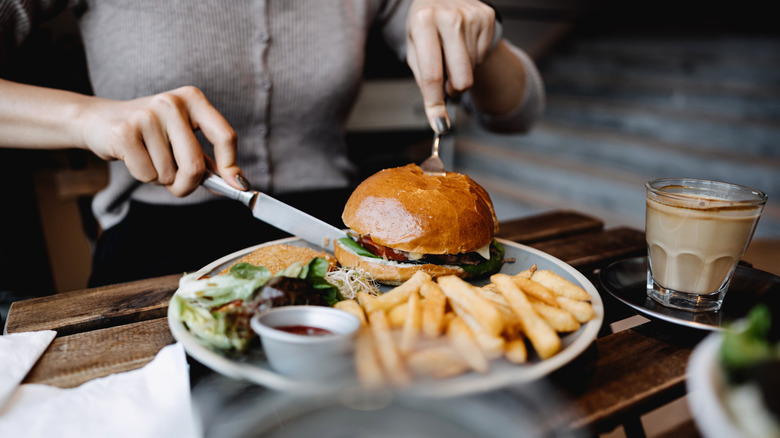In the world of fine dining, European dining knife etiquette plays a crucial role in showcasing one's sophistication and respect for tradition. For kitchen professionals, mastering this art is not just about adhering to customs but also about enhancing the dining experience for guests. The elegance of a well-set table and the graceful handling of cutlery can leave a lasting impression, making it essential for those in the culinary industry to familiarize themselves with these practices. This article will delve into the subtleties of European dining knife etiquette, offering insights that are valuable to anyone looking to elevate their dining skills.
European dining traditions differ significantly from those in other parts of the world, with a strong emphasis on the correct use of knives and forks. For instance, in contrast to American dining customs where the fork is often switched from the left hand to the right after cutting, European etiquette dictates that the fork remains in the left hand while the knife stays in the right. This subtle difference may seem minor, but it is a key component of European dining knife etiquette, reflecting a deep-seated cultural appreciation for formality and continuity at the table.

The Importance of Knife Etiquette in European Dining
For kitchen professionals, understanding the importance of knife etiquette in European dining is fundamental. It goes beyond mere tradition; it is a testament to one's professional competence and respect for cultural norms. In Europe, the dining experience is considered an art form, and the way one handles cutlery is part of that artistry. Proper knife etiquette ensures that meals are not only consumed with grace but also appreciated for their culinary artistry.
The positioning of the knife on the plate is another aspect of European dining that professionals must master. When taking a break during the meal, the knife should be placed at a slight angle on the plate, with the blade facing inward. This signals to waitstaff that the diner is not yet finished. Conversely, placing the knife parallel to the fork indicates that the meal is complete. Such nuances are critical in maintaining the flow of service in a fine dining setting.
Mastering the Knife and Fork: Techniques for Professionals
For those in the culinary field, mastering the use of knife and fork in European dining is essential. The key lies in the correct grip and movement. The knife should be held firmly but gently in the right hand, with the index finger resting on the top of the blade for added control. The fork, held in the left hand, should be used to steady the food while cutting. This technique ensures precision and elegance, reflecting the diner's expertise and understanding of European dining knife etiquette.
Another crucial aspect is the pace of dining. European meals are meant to be savored, with each dish appreciated for its unique flavors and presentation. Kitchen professionals should encourage diners to take their time, enjoying each bite and appreciating the skill that goes into every element of the meal. By fostering a relaxed yet refined dining atmosphere, professionals can enhance the overall experience for their guests.
Common Mistakes to Avoid in European Dining Etiquette
Even seasoned professionals can occasionally slip up when it comes to European dining knife etiquette. One common mistake is the incorrect placement of cutlery on the plate. As previously mentioned, the position of the knife and fork serves as a communication tool with the waitstaff. Misplacing them can lead to confusion and disrupt the dining experience.
Another frequent error is cutting all the food at once. In European dining, it is customary to cut and eat one piece at a time. This practice not only ensures that food remains at the optimal temperature but also aligns with the overall ethos of savoring each bite. Kitchen professionals should guide diners in understanding these customs, enhancing their appreciation of the meal and its presentation.
Additional Resources for Mastering Dining Etiquette
For those looking to further refine their skills, numerous resources are available. Websites like Emily Post offer comprehensive guides on dining etiquette, covering everything from cutlery placement to conversational tips. Additionally, exploring other dining traditions, such as Asian dining knife etiquette, can provide a broader understanding of global dining practices.
For practical tips and insights, professionals can also visit Kent State University, which offers valuable information on dining etiquette. By continuously seeking out new knowledge and staying informed about the latest trends, kitchen professionals can remain at the forefront of their field, offering exceptional dining experiences to their guests.

FAQs on European Dining Knife Etiquette
What is the correct way to hold a knife in European dining?
In European dining, the knife should be held in the right hand with the index finger resting on the top of the blade for better control. This grip allows for precise cutting and aligns with traditional dining customs.
How should cutlery be placed on the plate to signal I'm finished?
To indicate that you are finished with your meal, place the knife and fork parallel to each other on the plate, with the handles at the four o'clock position. This signals to the waitstaff that the meal is complete.
Is it acceptable to switch the fork from hand to hand when eating?
No, in European dining etiquette, the fork should remain in the left hand throughout the meal, while the knife stays in the right hand. This practice differs from American customs and is an essential aspect of European dining traditions.
This article contains affiliate links. We may earn a commission at no extra cost to you.


























